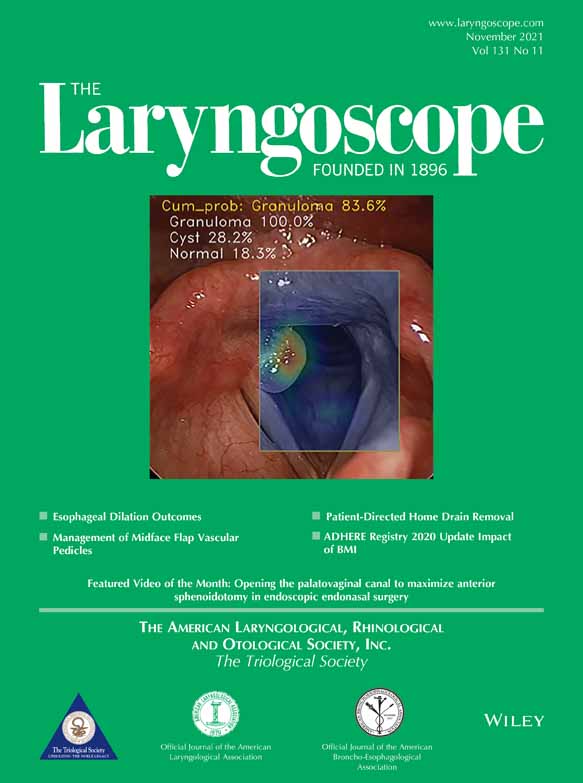Temporal Bone Osteoradionecrosis: An 18-year, Single-Institution Experience
Editor's Note: This Manuscript was accepted for publication on 06 July 2021.
Supported by the NIH/NCI under award number P30CA016672 and used the Biostatistics Resource Group.
The authors have no other funding, financial relationships, or conflicts of interest to disclose.
Presented as poster presentation at the Triological Society section of the Combined Otolaryngology Spring Meetings 2021.
Abstract
Objectives/Hypothesis
To report the largest single-institution review of temporal bone osteoradionecrosis (TBORN), and characterize the disease's natural history, prognostic factors, management, and outcomes.
Study Design
Retrospective chart review.
Methods
Retrospective review was conducted to identify patients with TBORN. Pertinent data were extracted. Descriptive statistics were used to summarize patient, tumor, and treatment characteristics. Multivariable analyses were conducted to explore associations between these characteristics and time to TBORN diagnosis and risk of developing diffuse disease.
Results
TBORN was identified in 145 temporal bones from 128 patients. Mean age at diagnosis was 62 years, and mean time to diagnosis after radiotherapy was 10 years. Age greater than 50 years was associated with earlier diagnosis. According to the Ramsden criteria, 76% of TBs had localized and 24% had diffuse disease at initial diagnosis; 37% had diffuse disease at last follow-up. On multivariable analysis, diabetes, three-dimensional conformal radiotherapy (3D-CRT), and periauricular skin malignancy were significant risk factors for developing diffuse disease. Localized disease was successfully managed with conservative measures, whereas surgery was often necessary for diffuse disease. When TBORN spread outside the mastoid or infratemporal fossa, conservative measures were always unsuccessful.
Conclusions
TBORN occurs earlier in older patients. While diffuse disease is less common than localized disease, it occurs more frequently in patients with diabetes, history of 3D-CRT, and periauricular skin malignancies. Conservative management is appropriate for localized disease, while surgery is often necessary for diffuse disease. The prognostic factors identified helped propose a TBORN staging system and treatment guidelines which may improve patient risk stratification and disease management.
Level of Evidence
4 Laryngoscope, 131:2578–2585, 2021




